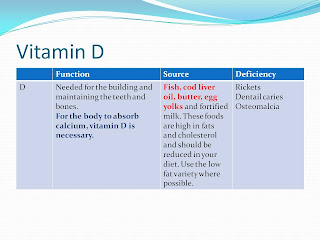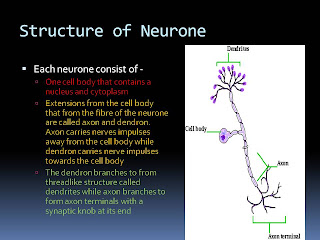Wednesday, 10 August 2011
Tuesday, 26 July 2011
Nutrient Requirement for Plant
Plant required macronutrient and micro nutrient in order to complete photosynthesis.
Macro Nutrients include the following
a) carbon
b) hydrogen
c) oxygen
d)nitrogen
e) phosphorus
f) potassium
g) magnesium
h)calcium
i) sulphur
Micro nutrient (trace element) include
a) boron
b) molybdenum
c) zinc
d) manganesse
e) copper
f) iron
Macro and micro nutrient are required by plant in order to synthesis substances essential for healthy growth.
Carbon, hydrogen and oxygen are obtain from carbon dioxide and water. The rest of nutrient are absorbed from the soil
Micronutrient are required to activate certain enzyme involved in cellular metabolism such as respiration.
Macro Nutrients include the following
a) carbon
b) hydrogen
c) oxygen
d)nitrogen
e) phosphorus
f) potassium
g) magnesium
h)calcium
i) sulphur
Micro nutrient (trace element) include
a) boron
b) molybdenum
c) zinc
d) manganesse
e) copper
f) iron
Macro and micro nutrient are required by plant in order to synthesis substances essential for healthy growth.
Carbon, hydrogen and oxygen are obtain from carbon dioxide and water. The rest of nutrient are absorbed from the soil
Micronutrient are required to activate certain enzyme involved in cellular metabolism such as respiration.
Friday, 10 June 2011
Digestion
Digestion
Food undergoes six major processes:
1. Ingestion : process of eating
2. Propulsion : passing of food down the GI tract swallowing : voluntary peristalsis : reflex, involuntary, involves alternating contractions of muscles in body walls of GI organs
3. Mechanical digestion
prepares food for chemical digestion includes chewing, mixing with saliva by tongue action, churning in stomach...
4. Chemical digestion
catabolic steps in which food is broken down to basic building blocks accomplished by enzymes in digestive juices
5. Absorption : passage of food particles into the blood-lymph
6. Defecation : elimination of indigestible food substances
Food undergoes six major processes:
1. Ingestion : process of eating
2. Propulsion : passing of food down the GI tract swallowing : voluntary peristalsis : reflex, involuntary, involves alternating contractions of muscles in body walls of GI organs
3. Mechanical digestion
prepares food for chemical digestion includes chewing, mixing with saliva by tongue action, churning in stomach...
4. Chemical digestion
catabolic steps in which food is broken down to basic building blocks accomplished by enzymes in digestive juices
5. Absorption : passage of food particles into the blood-lymph
6. Defecation : elimination of indigestible food substances
Concept of Balance Diet
A balance diet is one which contains the correct proportions of all the different food requirement of the body.
A balanced diet should supply enough energy for each day activities
A balance diet consist of the following food requirement
Carbohydrates and lipids to provide energy for all the activities in the body
Protein to build new tissues for growth and repair damaged tissues
Vitamins to prevent diseases and for normal healthy development
Mineral salts which are essential for normal healthy growth and development
Fibres as roughage to stimulate peristalsis and prevent constipation
Water which is needed as medium for all chemical reactions in the cells. It helps to transport substances that are needed by the cells and remove metabolic wastes. It also help to distribute and regulated body heat
Factors affecting the daily energy requirement of the body
Individual requires energy that is sufficient to carry out all living processes such as heart beating, breathing, growing, excreting and regulating body temperature of 37 C
Energy is obtained from the oxidation of glucose during cell respiration
The unit for energy is joule (J)
The energy value or calorific value is the quantify of heat produced when one gram of food is completely oxidised. Example of energy value in certain food are as follow
Carbohydrates 22.2 kJ per gram
Protein 17.2 kJ per gram
Lipids – 38.5 kJ per gram
One calorie or 4.2 J is the quantity of heat required to raise temperature of 1 gram of water by 1C. The energy value in a certain food can be determined by using the following formula
Energy value = (Mass of water gram x Increase in temp C x 4.2) mass of food (g)
The daily energy requirement of the body varies from individual to individual and depends on the following factors
Age
Sex
Body size and weight
Occupation
Heterotrophic Nutrition
Heterotrophic Nutrition
Heterotrophic nutrition is the nutrition of organisms which need ready made complex organic molecules, they obtain these wither directly from plants, or from organisms which have fed on plants. Thus heterotrophic organisms are the consumers in an ecosystem.
Organism that carry out heterotrophic nutrition are called heterotrophs
Holozoic Nutrition
Involves feeding by ingesting complex organic matter which are then digested and absorbed
Example of organisms with holozoic nutrition are animals and insectivorous plants
Secrete enzymes onto the food, then soluble products are absorbed
Involves feeding by absorbing their required nutrients from dead organic matter.
Extracellular digestion.
Responsible for decay.
The decomposers in an ecosystem.
Fungi such as Rhizopus are saprobionts. Bacteria and fungi like musrooms, yeast and Mucor (bread mould)
Parasites
Obtain food from another living organism, the host
There is a close association between the host and the parasite
The host suffers some degree of harm.
Taenia, the pork tapeworm, is a parasite, the adult is an endoparasite of human beings, thus we are the primary host, it is found attached to the wall of the small intestine of an infected individual, where it absorbs the soluble products of digestion.
Adaptations
Large surface area for absorption
No alimentary canal
Thick outer covering (tergument)
Suckers and hooks for attachment to gut wall, to resist peristalsis
Large numbers of offspring produced
Reduced nervous system
Heterotrophic nutrition is the nutrition of organisms which need ready made complex organic molecules, they obtain these wither directly from plants, or from organisms which have fed on plants. Thus heterotrophic organisms are the consumers in an ecosystem.
Organism that carry out heterotrophic nutrition are called heterotrophs
Holozoic Nutrition
Involves feeding by ingesting complex organic matter which are then digested and absorbed
Example of organisms with holozoic nutrition are animals and insectivorous plants
Sapropytism
Feed on the dead remains of other organisms(dead organic material).
Secrete enzymes onto the food, then soluble products are absorbed
Involves feeding by absorbing their required nutrients from dead organic matter.
Extracellular digestion.
Responsible for decay.
The decomposers in an ecosystem.
Fungi such as Rhizopus are saprobionts. Bacteria and fungi like musrooms, yeast and Mucor (bread mould)
Parasites
Obtain food from another living organism, the host
There is a close association between the host and the parasite
The host suffers some degree of harm.
Taenia, the pork tapeworm, is a parasite, the adult is an endoparasite of human beings, thus we are the primary host, it is found attached to the wall of the small intestine of an infected individual, where it absorbs the soluble products of digestion.
Adaptations
Large surface area for absorption
No alimentary canal
Thick outer covering (tergument)
Suckers and hooks for attachment to gut wall, to resist peristalsis
Large numbers of offspring produced
Reduced nervous system
Chemosynthesis
Chemosynthesis is a process certain organisms use to produce energy, akin to photosynthesis, but without the utilization of sunlight.
The energy comes from the oxidization (burning) of chemicals which seep up from the Earth's crust.
The organisms that use chemosynthesis,
all bacteria, manufacture carbohydrates and other organic molecules from the oxidization of sulfates or ammonia. The hydrogen they use comes from hydrogen sulfite, whereas the nitrogen comes from ammonia or nitrates.
The organisms that use chemosynthesis are found around hydrothermal vents on the ocean floor.
They are adapted to circumstances which would have been commonplace billion of years ago, leading some to call them descendants of the earliest life on Earth.
The energy comes from the oxidization (burning) of chemicals which seep up from the Earth's crust.
The organisms that use chemosynthesis,
all bacteria, manufacture carbohydrates and other organic molecules from the oxidization of sulfates or ammonia. The hydrogen they use comes from hydrogen sulfite, whereas the nitrogen comes from ammonia or nitrates.
The organisms that use chemosynthesis are found around hydrothermal vents on the ocean floor.
They are adapted to circumstances which would have been commonplace billion of years ago, leading some to call them descendants of the earliest life on Earth.
Autotrophic Nutrition
Autotrophic nutrition involves the use of an external energy source to make the complex organic molecules that we call food from inorganic substances
The organism that carry out autotrophic nutrition are called autotrophs.
Plants use light energy from the sun as their external energy source, this type of autotrophic nutrition is photosynthesis.
During photosynthesis carbon dioxide and water are used to manufacture carbohydrates.
Light energy is trapped by chlorophyll and used to fix carbon dioxide, firstly to reduce it to carbohydrates.
Plant manufacture all the other organic molecules that they need from these carbohydrates and very small quantities of mineral ions obtained from the soil.
The organism that carry out autotrophic nutrition are called autotrophs.
Plants use light energy from the sun as their external energy source, this type of autotrophic nutrition is photosynthesis.
During photosynthesis carbon dioxide and water are used to manufacture carbohydrates.
Light energy is trapped by chlorophyll and used to fix carbon dioxide, firstly to reduce it to carbohydrates.
Plant manufacture all the other organic molecules that they need from these carbohydrates and very small quantities of mineral ions obtained from the soil.
Type of Nutrition
There are two types nutrition
Autotrophic nutrition
Heterotrophic nutrition
Autotrophic nutrition
- Synthesise the organic food from inorganic substances
- Types
- Chemosynthesis
- Photsynthesis
Heterotrophic nutrition
- Organism depend on autotrophs or other organisms as a source of energy as they cannot synthesise their own food
- Holozoic
- Saprophytism
- Parasitism
Friday, 3 June 2011
Subscribe to:
Comments (Atom)




















































